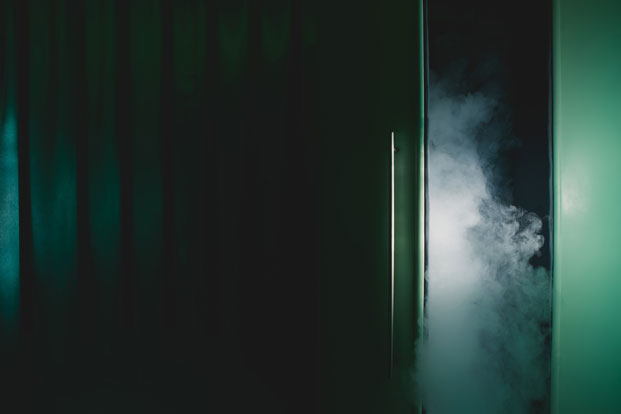Cryotherapy involves blasting the body with cold air in a room or chamber. The word cryo comes from the Greek word “krous,” meaning icy, cold or frost. Any use of ice or very cold materials is technically cryotherapy, although the centers that practice the treatments typically use machines or chambers to stimulate cold rather than merely apply ice.
Its practitioners and supporters claim cryotherapy can do everything from controlling weight to reducing pain, and even eliminating cancer in certain trouble spots. It is used in some cancer and skin surgery in a type of localized cryotherapy that is often called cryosurgery. The procedures are sometimes called cryoablation, percutaneous cryoablation, or cryosurgery in addition to cryotherapy. It is used extensively in professional athletic training, helping athletes with sore bodies and other recovery issues after games or exercising.
The problem many medical professionals have with cryotherapy is that there is little research to date to back many claims of its benefits. That doesn’t mean it won’t work, and the practice of cold treatments has obvious benefits in athletic training.
But such a lack of formal, official research provides an avenue for skeptics to doubt and charlatans to claim outlandish benefits. That leaves the medical community in somewhat of a no man’s land. While it seems like cryotherapy has its benefits, it is hard to say with any authority that it can truly help with all the conditions some claim.
Cryotherapy: What to Expect
Individual sessions can range from $40 and up for cryotherapy treatments, which usually involve standing in a cold chamber in whole-body cryotherapy, or laying in a chilled chamber for a limited amount of time in certain health spas.
In a session, customers wear minimal clothing and enter a compartment or device that chills the air to below 100 degrees, using liquid nitrogen or refrigerated air. Exposure is limited to two to four minutes, sufficient time to chill the muscles and skin. The patient’s skin temperature decreases about 10 degrees by the exposure, although some studies have noticed skin temperatures twice that range.
The big chill reduces the blood flow, slows metabolism and slows nerve signals, according to the supporter claims, many of them with a vested interest in touting the service.
The procedure is generally safe, but one recent death raised concerns. In the high-profile death, a female employee of a cryotherapy center in Colorado entered a container for an after-hours session. The compartment was set to open at a pre-arranged time but apparently failed, leaving the woman trapped in the chamber. Her body froze to death from long-term exposure to freezing temperatures. While the incident seems like a tragic accident, it does point out some of the risks associated with the procedure.
Cryotherapy for Cancer?
However skeptical medical professionals are about general claims, cryotherapy is used in cancer treatment to kill rogue cells with extreme cold. That process is called cryoablation.
In the procedure, a wand-like, thin needle (called the cryoprobe) passes through the skin and into the cancerous tumor. At that point, gas is pumped in to freeze the tissue. The process is repeated in alternating patterns of freezing and thawing several times as a way to kill off cancer cells.
Cryoablation is a way to treat cancers in spots where surgery is difficult or impossible. It has been used for cervical, eye, bone, liver, kidney, lung and prostate cancers and can be useful as a way to relieve cancer-related pain that has metastasized to bones or other organs.
The History of Cryotherapy
The first cryotherapy chamber debuted in Japan in the 1970s and was used to treat diseases in which inflammation occurred, such as rheumatoid arthritis. Japanese rheumatologist Toshima Yamaguchi is credited with developing the first chain of businesses devoted to the practice.
Before that, chilling as a medical treatment had been used for many years, including to help newborn babies. The process of chilling seems to switch on protective genes and stop cellular destruction, according to some research. Such celebrities as Kobe Bryant, Jessica Alba, Jennifer Aniston and LeBron James have publicly stated their support for the practice and participated in cryotherapy sessions.
But not every disease can be stopped or treated with cryotherapy. It may even cause damage, making patients more vulnerable to infections like pneumonia, although some research claims the opposite is true and that cryotherapy actually boosts the immune system.
The most controversial issue with cryotherapy always turns back to the lack of credible research to support its claims. There have only been some minor studies, with less than 100 people participating. Such small studies are not considered definitive, and certainly no long-term studies have emerged, nor have ones that focus on side effects of cryotherapy.
While soaking in cold water seems to help sore muscle pain after workouts or contact sports, there’s little support for other miraculous claims. Whole-body cooling works for athletes if started within 24 hours after exercise, offering such benefits as a decrease in inflammatory cytokines, changes in antioxidant status and effects on muscular enzymes associated with muscle damage.
Future studies may yet determine whether cryotherapy has any long-term risks or damages associated with it. Given that there is always pressure to maximize athletic performance, medical professionals are lobbying for greater safety guidelines in using cryotherapy procedures to help athletes recover and to treat injuries.
Except for the unfortunate woman who was trapped in a cryotherapy chamber, there appears to be little risk in trying a treatment. There are localized chains that use it for spot reducing on body parts by affixing a cold-inducing clamp, and there are other spas that offer chambers akin to tanning beds where people can indulge in a cryotherapy session strictly for health reasons.
What is clear is that cryotherapy businesses are growing throughout the United States. As with any medical treatment, talk to a doctor before undergoing cryotherapy sessions, and use common-sense cautions by observing the cleanliness and professionalism of any spa that offers treatments.

Leave a Reply